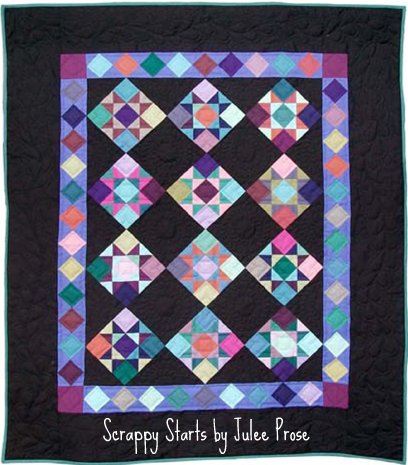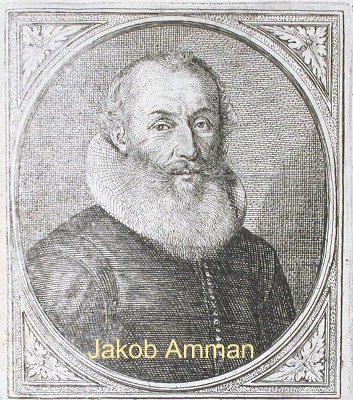|
The Amish Quilt
To answer this question, it helps to understand a little history of the Amish culture which we will discuss below. There are many definitions about what makes a quilt Amish. Some require that the quilt be made by the Amish people, most often who reside in Pennsylvania, Ohio, or Indiana. Typically Amish quilters are women, as Amish men rarely participate in quilting. The Amish and Mennonite women of the Pennsylvania Dutch Country (near Lancaster) have been quilting since the early to mid 1800's. Not only do these quilts serve a very functional purpose, but they add an element of social usefulness as well. Often times, groups of Amish or Mennonite women gather for a quilting bee. The bee is a form of socialization and relaxation for these women. It's a time to catch-up on the latest with one another. A drive through Lancaster county PA reveals that many Amish and Mennonite women have opened up small quilt shops in their homes to help with family income. The observer will see handmade signs stating, “Quilts for Sale – Closed Sundays.” A recent visit by Brothers Handmade to several of these Amish Quilt shops shows a quiet, beautiful old farmhouse, with tables, and hangers displaying dozens of beautiful handmade Amish quilts. Most have darker backgrounds with accents of bright colors and designs. An Amish lady dressed in her traditional Amish dress and head covering offers her help. Other definitions include quilts made by either Amish or Mennonites.
Many Amish quilts reflect a restrained intensity with their beautiful brightly colored geometric embellishments against a dark blue or black background. And upon a close-up inspection, one notes the stunning quilting patterns, and highly detailed craftsmanship, sometimes accomplished completely by hand.
In this quilt example, according to the AQS, Beth constructed the quilt using Amish Tumbling Blocks (a one-patch style where all of the patches are of the same shape and size), and Shelley performed the longarm quilting. National Quilting Association, Certified Judge, Klaudeen Hansen has made a career of designing, sewing, and judging quilts in the Amish Tradition. Klaudeen notes, that you will seldom if ever find an “Amish” quilt in a quilt show actually made by an Amish Quilter, as this would be considered too vane and showy for the Amish culture. However, you will find some Amish style quilts, quilted by Mennonites, who in some cases had Amish parents. Klaudeen, who had exhibited her Amish style quilts in many invitational shows both in the U.S. and Europe, as well as the American Embassy in Oslo, Norway, observes that Interior Decorators love the Amish style quilts as wall hanging decoration because their primary colors are dark and reserved, but the quilter can integrate a couple bright colors of the room into the design. The resulting quilt will effectively strike a balance between adding visual decoration while not taking over the room. American Quilters Society site. Before Purchasing an Amish Quilt
Amish and Mennonite HistoryThe Amish trace their heritage back to the Protestant Reformation in Europe centered around Martin Luther. A splinter group of Reformers rejected the idea of infant baptism, and became known as the Anabaptists (meaning “again baptized”). This group believed that only adults who had confessed their faith should be baptized, and that they should mostly isolate themselves from the rest of society. Then in 1536, a Catholic priest from Holland named Menno Simons, joined this Anabaptist group. Menno Simons was quite a charismatic leader and writer, and soon a group split off once again, and were referred to as Mennonites. One teaching of the Amish and early Mennonite faith is called “shunning” or "meidung". This is based on the New Testament instructions, not to associate with a church member (brother or sister in the bible verses) who acts out certain sins and does not repent. The Biblical basis for shunning is found in these two verses:
The purpose of this (shunning) discipline is to help the member realize the error of his ways and to encourage his repentance, after which he would be restored to church fellowship. The most common reason for "shunning" is because of marriage outside the Amish faith. During the 16th and 17th centuries, thousands of these Anabaptist groups were considered heretics, persecuted and put to death throughout Europe by the Catholics and Protestants. Many fled to the mountains of Switzerland and southern Germany to escape this persecution. (Ref: THE ANABAPTISTS, Reformation Men and Theology, Lesson 10 of 11, by Dr. Jack L. Arnold, 1999) Here in these regions began the Amish traditions of farming and holding worship services in homes rather than churches. As a result of William Penn’s “holy experiment” where he offered religious freedom in the region that would later become Pennsylvania, many Amish and Mennonites groups settled in this area. The first large group of Amish arrived in Lancaster County between 1720 and 1740. Today, Amish families are generally found in 23 states (and one Canadian province.) Since 1960, their total population has approximately doubled to 85,000. The Amish and Mennonite churches continue to have common beliefs related to baptism, non-resistance, and other basic Bible doctrines. However, they differ in matters of technology, language, worship, and Bible interpretations. Most Mennonites have relaxed dress codes, and are less involved in farm related jobs. While Old Order Mennonites still drive their all-black carriages, most Mennonite groups do permit the use of cars and electricity. However, some groups do require that car bodies and trim be painted black. Discover Amish QuiltsBrothers-Handmade encourages you to explore the world of Quilts and in particular, Amish Quilts. The American Quilters Society or AQS holds a number of spectacular quilt shows each year. In fact we have blogged about several of these shows. Return from Amish Quilt to Handmade Quilts
|




 What is an Amish Quilt anyway?
What is an Amish Quilt anyway?


 The act of “shunning” was originally only applied to the sacrament of Holy Communion. However, a rising leader in the Mennonite church named Jacob Amman believed the unrepentant member should be completely shunned by all church members. In 1693, these differing beliefs on the application of shunning along with other beliefs and differences led Jacob Amman and his followers’ to split with the Mennonites. These followers of Amman became known as Amish.
The act of “shunning” was originally only applied to the sacrament of Holy Communion. However, a rising leader in the Mennonite church named Jacob Amman believed the unrepentant member should be completely shunned by all church members. In 1693, these differing beliefs on the application of shunning along with other beliefs and differences led Jacob Amman and his followers’ to split with the Mennonites. These followers of Amman became known as Amish.